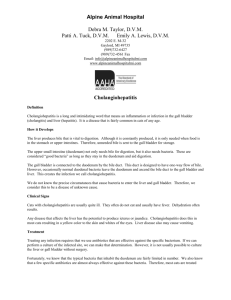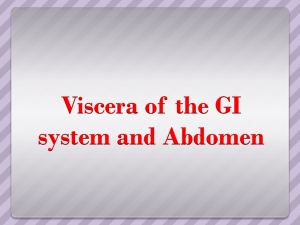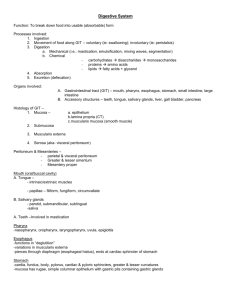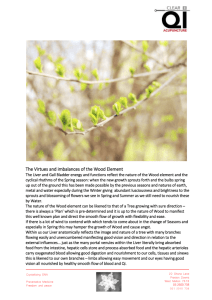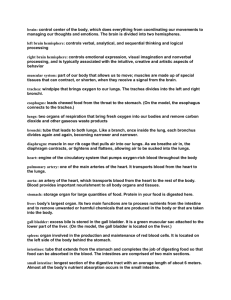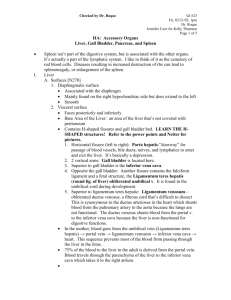The Liver and Gall Bladder
advertisement
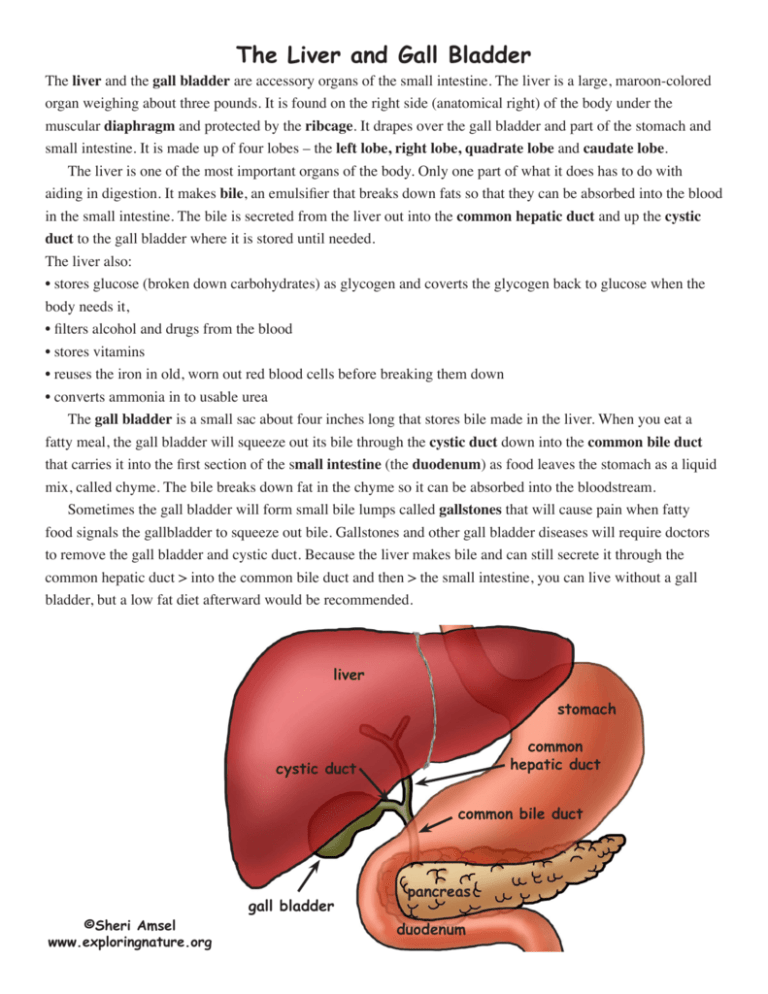
The Liver and Gall Bladder The liver and the gall bladder are accessory organs of the small intestine. The liver is a large, maroon-colored organ weighing about three pounds. It is found on the right side (anatomical right) of the body under the muscular diaphragm and protected by the ribcage. It drapes over the gall bladder and part of the stomach and small intestine. It is made up of four lobes – the left lobe, right lobe, quadrate lobe and caudate lobe. The liver is one of the most important organs of the body. Only one part of what it does has to do with aiding in digestion. It makes bile, an emulsifier that breaks down fats so that they can be absorbed into the blood in the small intestine. The bile is secreted from the liver out into the common hepatic duct and up the cystic duct to the gall bladder where it is stored until needed. The liver also: • stores glucose (broken down carbohydrates) as glycogen and coverts the glycogen back to glucose when the body needs it, • filters alcohol and drugs from the blood • stores vitamins • reuses the iron in old, worn out red blood cells before breaking them down • converts ammonia in to usable urea The gall bladder is a small sac about four inches long that stores bile made in the liver. When you eat a fatty meal, the gall bladder will squeeze out its bile through the cystic duct down into the common bile duct that carries it into the first section of the small intestine (the duodenum) as food leaves the stomach as a liquid mix, called chyme. The bile breaks down fat in the chyme so it can be absorbed into the bloodstream. Sometimes the gall bladder will form small bile lumps called gallstones that will cause pain when fatty food signals the gallbladder to squeeze out bile. Gallstones and other gall bladder diseases will require doctors to remove the gall bladder and cystic duct. Because the liver makes bile and can still secrete it through the common hepatic duct > into the common bile duct and then > the small intestine, you can live without a gall bladder, but a low fat diet afterward would be recommended. liver stomach common hepatic duct cystic duct common bile duct ©Sheri Amsel www.exploringnature.org gall bladder pancreas duodenum Color the Structures Connected to Liver Function liver stomach common hepatic duct cystic duct common bile duct pancreas gall bladder small intestine ©Sheri Amsel www.exploringnature.org duodenum Label the Structures Connected to Liver Function 1.____________________________________________________________ 2.____________________________________________________________ 3.____________________________________________________________ 4.____________________________________________________________ 5.____________________________________________________________ 6.____________________________________________________________ 7.____________________________________________________________ 8.____________________________________________________________ 1 3 6 7 8 2 4 5 ©Sheri Amsel www.exploringnature.org Label the Structures Connected to Liver Function KEY liver 1.____________________________________________________________ gall bladder 2.____________________________________________________________ stomach 3.____________________________________________________________ pancreas 4.____________________________________________________________ duodenum (small intestine) 5.____________________________________________________________ common hepatic duct 6.____________________________________________________________ cystic duct 7.____________________________________________________________ common bile duct 8.____________________________________________________________ 1 3 6 7 8 2 4 5 ©Sheri Amsel www.exploringnature.org


